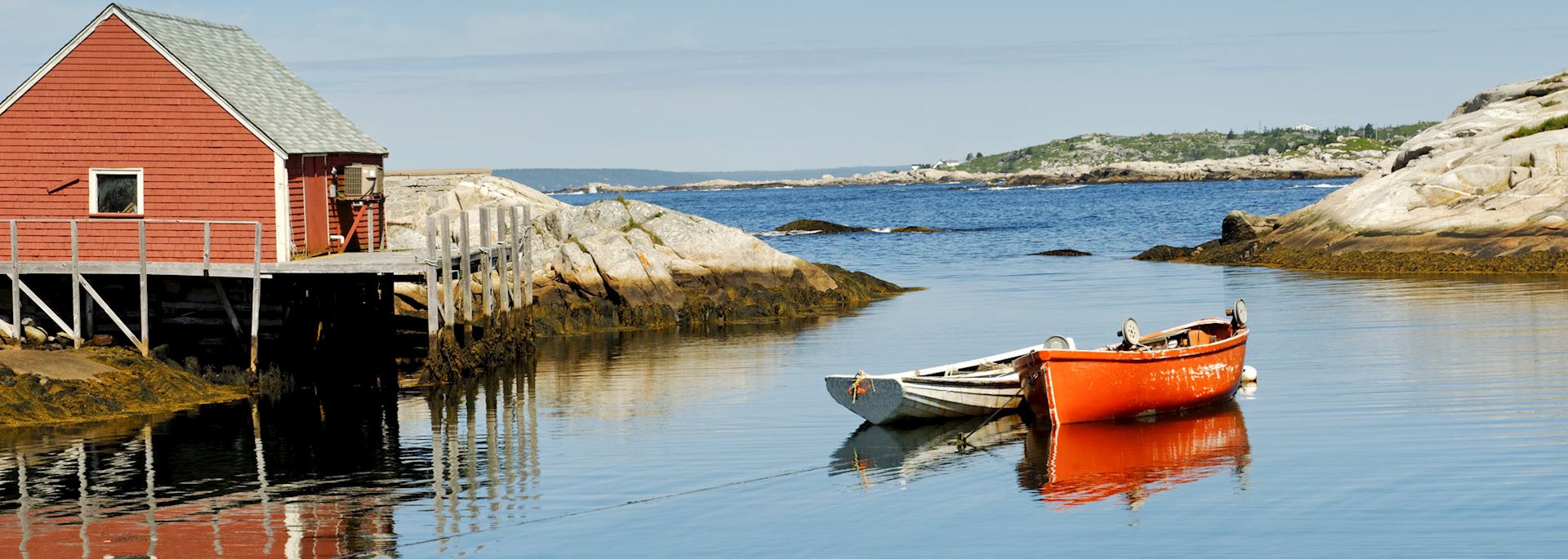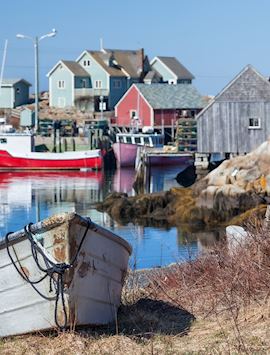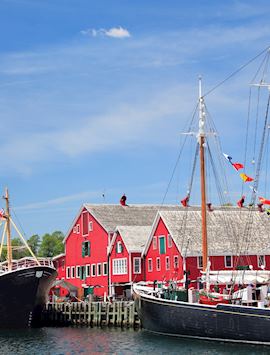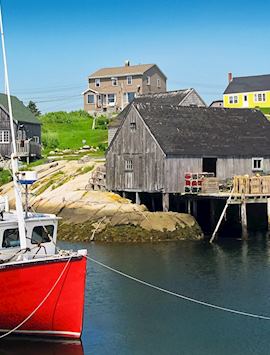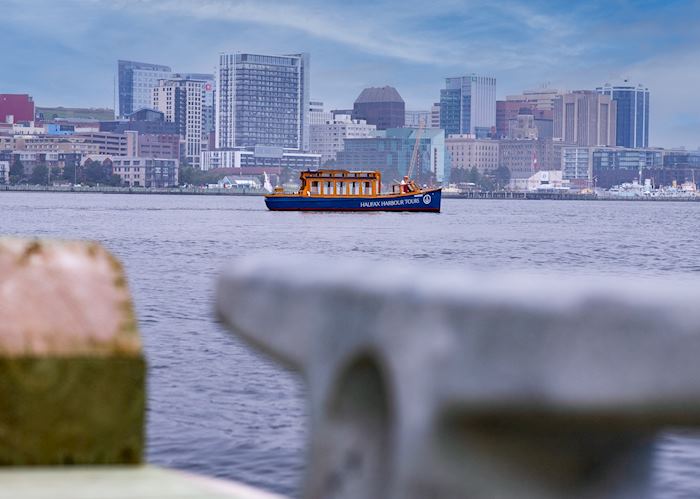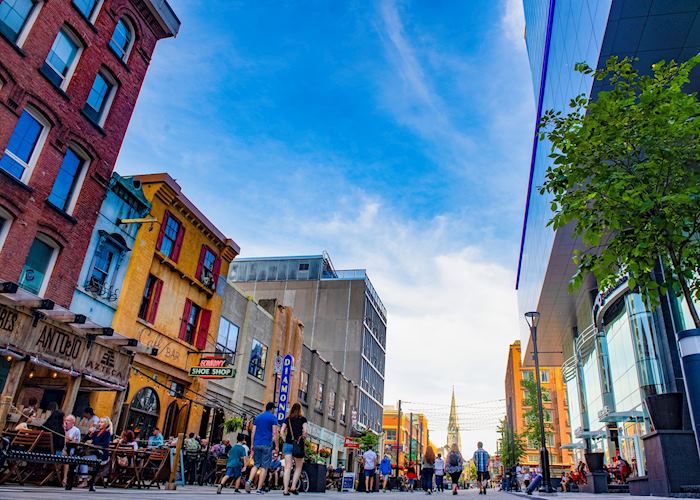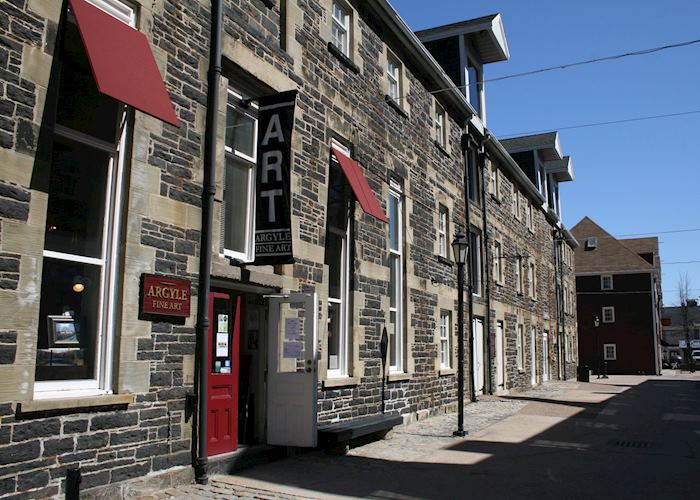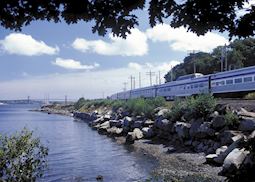Jump to:
The capital of Nova Scotia, Halifax is the largest city in the Atlantic provinces and set on the world’s second-largest natural harbour.
The compact city centre, dominated by the Citadel and its adjacent clock tower, is easy to navigate on foot.
Seafood restaurants
Along the waterfront you’ll find plenty of excellent seafood restaurants and several microbreweries as well as the Historic Properties, a collection of boutique shops in restored maritime warehouses.
The harbour is always busy with ferries that ply across to Dartmouth on the other side, and during the summer season the schooner Bluenose II, a symbol of the province, is often moored here.
Titanic disaster
In 1912 the Titanic sank to the east of here and memorabilia from the wreck is on display at the city’s superb Maritime Museum of the Atlantic, along with a collection of brightly-coloured ships’ figureheads. Many local cemeteries bear testimony to the disaster but these days Halifax is very much a living society, with plenty of live music bars and a thriving theatre scene.
who's been there
-
01993 838 92501993 838 793
- Make an enquiry
Suggested itineraries featuring Halifax
Our itineraries will give you suggestions for what is possible when you travel in Halifax, and they showcase routes we know work particularly well. Treat them as inspiration, because your trip will be created uniquely by one of our specialists.
Places near Halifax
- Lunenburg 42 miles away
- Nova Scotia 68 miles away
- Liscomb Mills 77 miles away
- Pictou 83 miles away
- Hopewell Rocks 95 miles away
- Annapolis Royal 96 miles away
- Charlottetown 113 miles away
- Charlos Cove 118 miles away
- Prince Edward Island 119 miles away
- The Bay of Fundy 124 miles away
- Spry Point 126 miles away
- Cavendish 128 miles away
- Saint John 130 miles away
- West Point 143 miles away
- Kouchibouguac National Park 165 miles away
- Saint Andrews by-the-Sea 173 miles away
- Cape Breton & Cabot Trail 182 miles away
- New Brunswick 191 miles away
- Louisbourg 197 miles away
- Îles de la Madeleine 205 miles away
- Ingonish 207 miles away
- Caraquet & the Acadian Peninsula 226 miles away
- The Gaspé Peninsula 293 miles away
Photos of Halifax
Our expert guides to exploring Halifax
Written by our specialists from their own experiences of visiting Halifax, these guides will help you make the most of your time there. We share both our practical recommendations and the best ways to appreciate Halifax at its best.
-
Canada’s Maritime Provinces ![Humpback whale breaching, British Columbia]()
Canada’s Maritime Provinces
Canada’s Maritime Provinces
Canada’s Maritime Provinces offer a quieter alternative to the west coast. Here, you can follow coastal roads to secluded coves and traditional lighthouses. Visit peaceful fishing villages where saltbox houses line the waterfront. And, explore the area’s Celtic roots. Canada specialist Jon shares his highlights of the region.
Read this guide
Accommodation choices for Halifax
We've selected a range of accommodation options for when you visit Halifax. Our choices usually come recommended for their character, facilities and service or location. Our specialists always aim to suggest properties that match your preferences.
-
![Restaurant, Prince George Hotel, Halifax]()
Prince George Hotel
Halifax -
![Entrance, The Lord Nelson Hotel, Halifax]()
Lord Nelson Hotel & Suites
Halifax
Ideas for experiencing Halifax
Our specialists seek out authentic ways to get to know the places that could feature in your trip. These activities reflect some of the experiences they've most enjoyed while visiting Halifax, and which use the best local guides.
-
Rail journey on The Ocean ![The Ocean train]()
Rail journey on The Ocean
Rail journey on The Ocean
A rail journey on The Ocean between Montréal and Halifax provides a wonderful glimpse of Canada’s past.
View details -
Halifax Harbour sailing trip ![Heritage buildings on the old town waterfront, Halifax]()
Halifax Harbour sailing trip
Halifax Harbour sailing trip
In the late afternoon, board Halifax’s signature sailing ship, a three-masted schooner, to watch the sun set over the city while admiring this historic ship. You can grab a drink from the bar and relax, or help the crew hoist the sails.
View details

